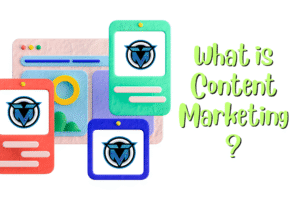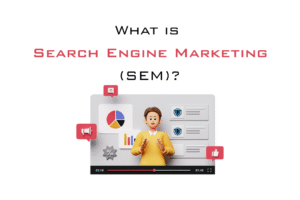🧠Interactive Media refers to digital content that responds to user input and encourages real-time interaction. Unlike traditional media—such as print, television, or radio—interactive media allows users to actively participate in the content, often changing or shaping it through their choices and actions.
In simple terms: if a user can click, swipe, type, play, drag, or speak to it—it’s interactive media.
📱 Examples of Interactive Media
- Mobile apps and games
- Websites with interactive elements
- Online learning platforms (eLearning)
- Virtual Reality (VR) and Augmented Reality (AR) experiences
- Interactive infographics and data visualizations
- Social media posts with polls, quizzes, or sliders
- Chatbots and AI-powered assistants
🧩 Key Elements of Interactive Media
To fully understand interactive media, it’s essential to break it down into its fundamental elements:
| Element | Description |
|---|---|
| User Input | Actions like clicking, touching, swiping, speaking, or typing. |
| Responsive System | The technology reacts to the user’s input with real-time changes. |
| Multimedia Integration | Combines text, audio, video, animation, and graphics. |
| Feedback Loop | Users get immediate feedback, such as animations, messages, or results. |
| User Control | Users often guide the flow or direction of the experience. |
These components work together to deliver a dynamic, engaging, and personalized experience to users.
🛠️ How Does Interactive Media Work?
Interactive media functions through a combination of front-end user interfaces, back-end programming, and real-time processing.
Here’s a breakdown of how it all works:
1. User Interaction Initiates Input
The user interacts with a digital interface—like clicking a button, swiping on a screen, or speaking to a virtual assistant.
2. Input Is Captured and Processed
Behind the scenes, the system processes that input using programming logic (JavaScript, Python, AI models, etc.) and responds accordingly.
3. Feedback Is Delivered
The system provides an immediate response, like:
- Visual changes (animation or graphic update)
- New data (score, results, or outcomes)
- Audio response (sound or narration)
- Navigation (moving to a new screen or level)
4. Real-Time Updates
Modern interactive platforms use cloud-based APIs, real-time databases (like Firebase), or streaming technologies to allow seamless interaction with minimal delay.
💡 Types of Interactive Media
1. Interactive Websites
These are websites that include features like sliders, animations, forms, chatbots, or clickable maps. They improve UX and keep users engaged longer.
2. Mobile Applications
Apps with game-like interfaces, onboarding tutorials, interactive forms, and feedback mechanisms are widely used in education, healthcare, and entertainment.
3. Games (Serious and Recreational)
Gaming is the most immersive form of interactive media, from casual mobile games to fully immersive VR titles.
4. Virtual Reality (VR) & Augmented Reality (AR)
These technologies allow users to engage with simulated environments or digital elements overlaid on the real world.
5. Interactive Video
These videos allow users to make decisions that influence the storyline (like Netflix’s Bandersnatch), or even shop within a video by clicking on products.
6. Educational Tools
Interactive eLearning platforms use quizzes, simulations, progress trackers, and gamification to improve learning outcomes.
🎯 Importance of Interactive Media in 2025
Interactive media is more than just a trend—it’s now a core strategy in multiple industries. Here’s why it’s more important than ever:
✅ 1. User Engagement
Interactive content holds attention longer and increases user retention. It turns passive users into active participants.
✅ 2. Personalization
By allowing user input, platforms can tailor experiences to individual preferences and behavior.
✅ 3. Learning & Education
Studies show that interactive media significantly improves learning retention and understanding compared to passive reading or listening.
✅ 4. Data Collection
It allows businesses to collect user data based on choices and interactions, offering valuable insights for marketing and product design.
✅ 5. Brand Differentiation
Offering a unique, engaging experience sets a brand apart from competitors and creates a lasting impression.
📈 How Businesses Use Interactive Media
| Industry | Application Examples |
|---|---|
| Retail | Virtual fitting rooms, interactive catalogs |
| Healthcare | Symptom checkers, virtual doctor consultations |
| Education | Learning apps, digital labs, virtual classrooms |
| Marketing | Interactive ads, polls, gamified campaigns |
| Entertainment | VR storytelling, choose-your-own-adventure shows |
Interactive media boosts conversion rates, customer loyalty, and time spent on platforms.
🔍 SEO & Interactive Media: A Winning Combination
Even though interactive elements are not text-based, they can boost your SEO when used strategically:
- Improved Dwell Time: Users stay longer, which Google interprets as valuable content.
- Reduced Bounce Rate: Engaging visuals and interactions prevent users from exiting immediately.
- Better User Experience (UX): A key ranking factor in Google’s algorithm.
- Schema Markup: Use structured data for interactive FAQs, quizzes, or events.
- Alt Text & Accessibility: Ensure all visuals are labeled properly for indexing and usability.
💡 Tip: Always balance interactivity with load speed. Heavy scripts or unoptimized content can slow your site, hurting rankings.
🛑 Challenges of Interactive Media
Despite its benefits, there are a few challenges to consider:
- Development Costs: Interactive tools often require advanced coding, design, and testing.
- Accessibility Issues: Poorly designed interactions can be difficult for users with disabilities.
- Device Compatibility: Content must be responsive across all screen sizes and devices.
- Performance Impact: Complex interactivity may slow down websites if not optimized properly.
Solution? Use frameworks like React, Next.js, or Flutter for efficient, cross-platform development and work with UX designers who understand accessibility standards.
🚀 The Future of Interactive Media
Looking ahead, interactive media is only going to grow in influence. Some key trends to watch in 2025 and beyond:
- AI-Powered Interactions: Voice assistants and chatbots will become more personalized and human-like.
- Immersive Technologies: AR glasses, haptics, and spatial computing will expand how we interact with digital worlds.
- Web 3.0 & Blockchain: Interactive NFT galleries, decentralized virtual spaces, and user-owned media.
- Hyper-Personalization: Media will adjust dynamically in real-time to user preferences, behavior, and even emotion.
📝 Final Thoughts
In a world full of noise and distractions, interactive media stands out by offering personalized, engaging, and meaningful experiences. Whether you’re a business owner, educator, content creator, or just a tech enthusiast, understanding how interactive media works—and how to leverage it—can open doors to better engagement, higher performance, and more meaningful digital experiences.
As we move deeper into 2025, embracing interactive content isn’t just a competitive advantage—it’s a necessity.













